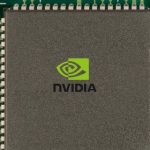The Wireless Broadband Alliance (WBA) has published its Annual Industry Report 2025, outlining significant advancements expected in Wi-Fi technology by 2025. These predictions highlight the industry’s focus on enhancing connectivity, increasing speeds, and ensuring robust security measures. As the demand for seamless internet access grows, the WBA’s insights provide a roadmap for stakeholders to navigate the evolving wireless landscape.
The evolution of Wi-Fi technology is set to address the challenges of a connected world, marked by a surge in device usage and the need for energy-efficient solutions. The WBA’s forecast emphasizes the integration of advanced standards and the expansion of frequency bands to accommodate the increasing number of internet-enabled devices.
How Will Wi-Fi 7 Shape Connectivity?
Wi-Fi 7 is anticipated to be adopted primarily by technology-driven industries and smart home enthusiasts. Large tech firms and enterprises are expected to implement Wi-Fi 7 early to support remote collaboration, IoT sensors, and high-definition video conferencing. Public venues such as stadiums and airports will also be among the first to adopt this standard, ensuring seamless connectivity for a large number of users.
What Role Will AI Play in Network Optimization?
Artificial Intelligence (AI) will be integral in optimizing network performance. AI-powered routers and cloud platforms will manage traffic patterns, adjust bandwidth allocation, and oversee device connectivity to enhance overall performance. This technology will be especially critical in environments with a high density of IoT devices, ensuring efficient and reliable internet access.
Will Wi-Fi and 5G Continue to Converge?
The convergence of Wi-Fi and 5G technologies is expected to continue, providing users with uninterrupted and high-quality connectivity. Technologies such as OpenRoaming and Passpoint will facilitate seamless transitions between networks, while 5G’s network slicing will support applications requiring real-time data processing. This synergy will support the development of smart cities and autonomous vehicles, relying on robust and ubiquitous connectivity.
In recent years, the Wi-Fi industry has made significant strides in enhancing user experience and expanding network capabilities. The WBA’s 2025 predictions build on previous advancements, projecting a future where Wi-Fi technology is even more integral to daily life and industrial operations. The emphasis on AI and the continued convergence with 5G reflect the industry’s commitment to meeting the growing demands for connectivity and efficiency.
The insights provided by the WBA offer valuable guidance for businesses and policymakers aiming to leverage Wi-Fi advancements. By focusing on areas such as energy efficiency, frequency band expansion, and AI-driven optimization, stakeholders can better prepare for the technological shifts anticipated in the coming years. These developments are poised to enhance both consumer and enterprise connectivity, driving innovation and supporting the infrastructure of smart environments.
The future of Wi-Fi as outlined by the WBA underscores the importance of continued investment in technology and collaboration across the wireless ecosystem. Ensuring that networks are adaptable, secure, and capable of handling the increasing demand will be crucial in maintaining the momentum of digital transformation.










